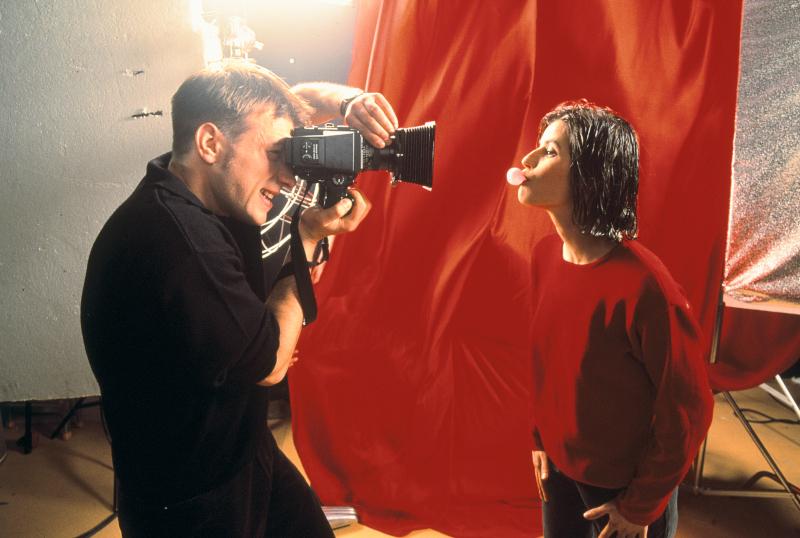Director – Krzysztof Kieślowski – 1994 – France – Cert. 15 – 99m
*****
An up-and-coming model strikes up a friendship with a retired judge after her car accidentally runs over his dog one night – 4K restoration is out in UK cinemas on Friday, April 14th
This represents the third part of a trilogy based on the three colours of the French national flag, with each film representing one of that nation’s three values of liberté, égalité, fraternité (liberty, equality, brotherhood). I interviewed Kieślowski for this back in 1994, the second time I’d interviewed him. The first was in 1993 for Three Colours: Blue.
Like Three Colours: Blue and Three Colours: White before it, Three Colours: Red is about human connection or lack of it. As if to underscore the point, it starts off with an international phone call which fails to connect. In a nod to Dial M For Murder (Alfred Hitchcock, 1953) where a phone call is shown via images of telephony, little mechanisms springing into brief action to make a phone call happen, Kieślowski has his camera race along telephone cables on the ground, at one point following them down a beach into the sea and out again onto land on the other side of a lake or ocean. He isn’t making a thriller, though, and the caller gets the engaged tone.
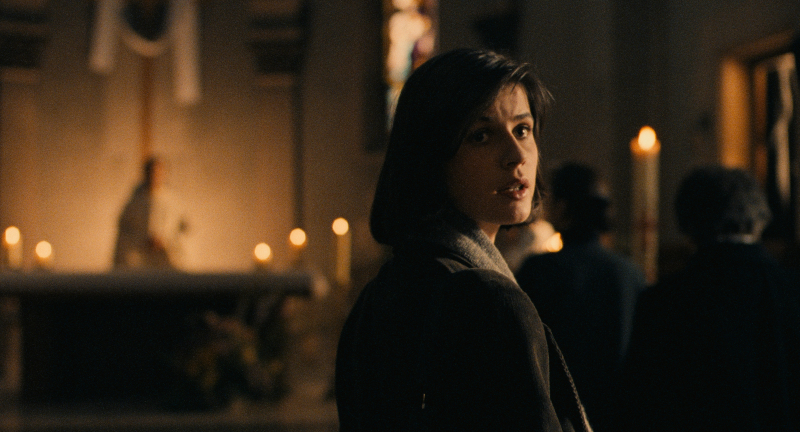
The setting is Geneva. Valentine (Irène Jacob from The Double Life Of Veronique, Krzysztof Kieślowski, 1991) lives in her apartment, from where she engages in phone conversations with a man with whom she’s romantically involved. (The film was made before the advent of the smartphone; today you’d probably conceive this very differently.) In an apartment in the building across the street, law student Auguste (Jean-Pierre Lorit), studying for his finals, does the same thing with his girlfriend.
Despite their spatial proximity, neither Valentine nor Auguste know each other; they live in their own, completely different, separate worlds. And apart from a coda at the end, in which seven of the principal characters of the films unexpectedly appear together, their worlds stay separate for the remainder of the proceedings.
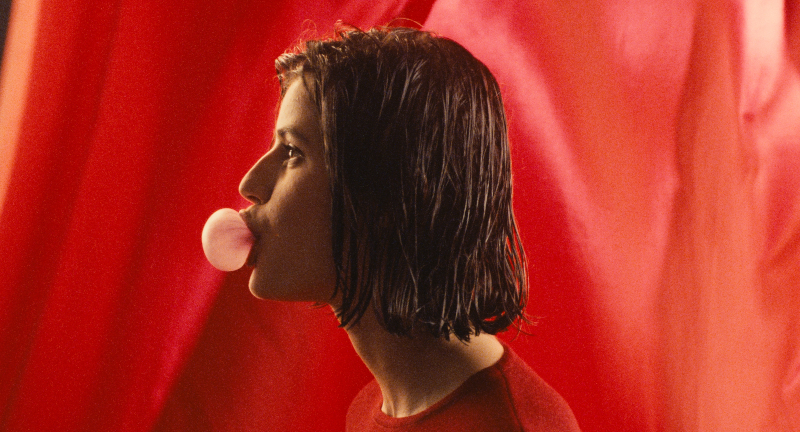
She goes about her busy life: rehearsal time with fellow students at the dance studio, modelling shoots with a photographer (Samuel Le Bihan). She discusses the pictures from a shoot with the latter, who shows her the images the client liked, and they settle on an image for a campaign, a house-sized enlargement of which image will be printed onto cloth and displayed on a street Valentine often passes in the course of a day. After concluding their business, they hang around and chat, and he attempts to kiss her, but she repulses him, making it clear that she’s thinking abut someone else.
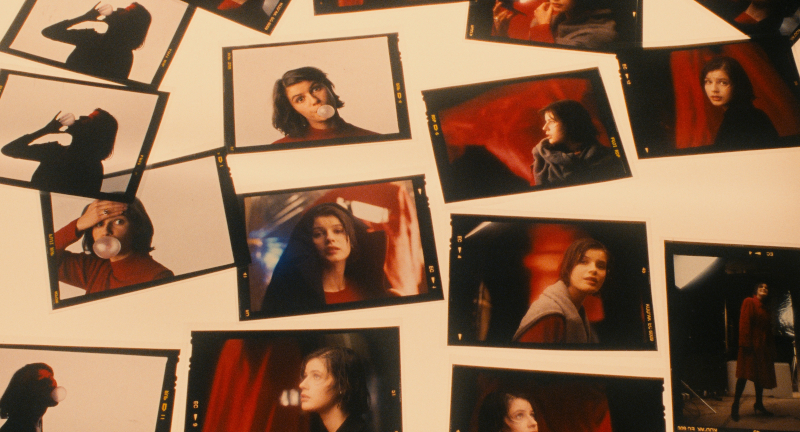
It’s a pressured existence, and she’s generally very good at holding it all together, driving around the city from here to there in her little runaround, but one night when she’s paying too much attention to the radio dial and not enough to the road, there’s a thump. Perhaps more than the self-obsessed Julie (Juliette Binoche) in Blue and the focussed, empire-building Karol Karol (Zbigniew Zamachowski) in White, she likes to think of herself as a caring person who looks out for others, so she’s mortified.
Getting out of the car, she discovers she’s hit a dog, and the creature is lying, wounded, in the road. She carefully picks up and bundles the wounded creature into her back seat and drives it to the address on its collar, where she meets its owner, a retired judge (Jean-Louis Trintignant from The Conformist, Bernardo Bertolucci, 1970), who doesn’t bother to lock either his gate or his front door and, when she finds him inside his house, seems disinterested, so much so that she takes the dog home and looks after it, including trips to the vet (for which the judge gives her the money without being prompted and for which bill she later scrupulously pays him back the change).
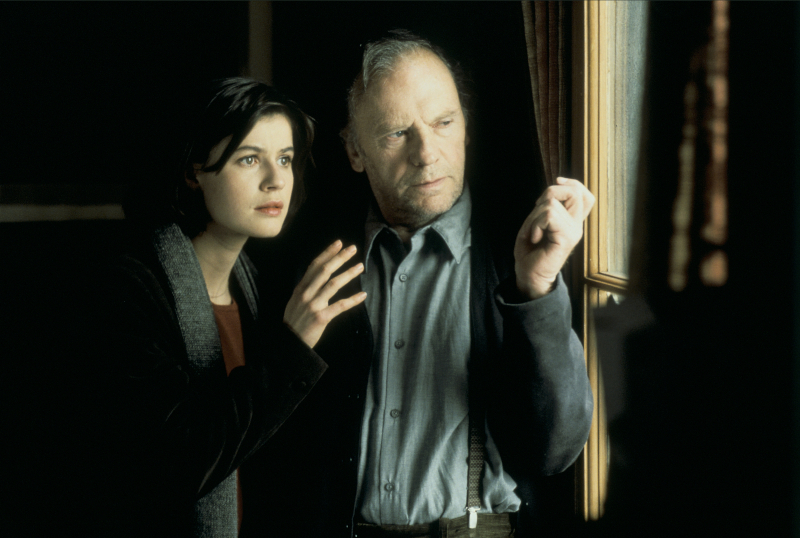
She gets to know the judge on subsequent visits. He has never married or had children, and their relationship plays out like that of a surrogate father to a daughter. One day she comes in and discovers his hobby. He has a short range radio receiver through which he listens to the phone calls of his nearby neighbours, an activity he admits to knowing to be illegal. The phone calls include a family where the husband is having an affair about which his wife hasn’t yet found out.
Valentine is appalled, so the judge tells her to report him. She goes round to the family in question to tell them, but can’t bring herself to do so; moreover, while she’s there, she sees the wife tell off their daughter for eavesdropping daddy’s conversations on the phone. The daughter knows what’s going on, and it’s presumably only a matter of time before the wife finds out too.
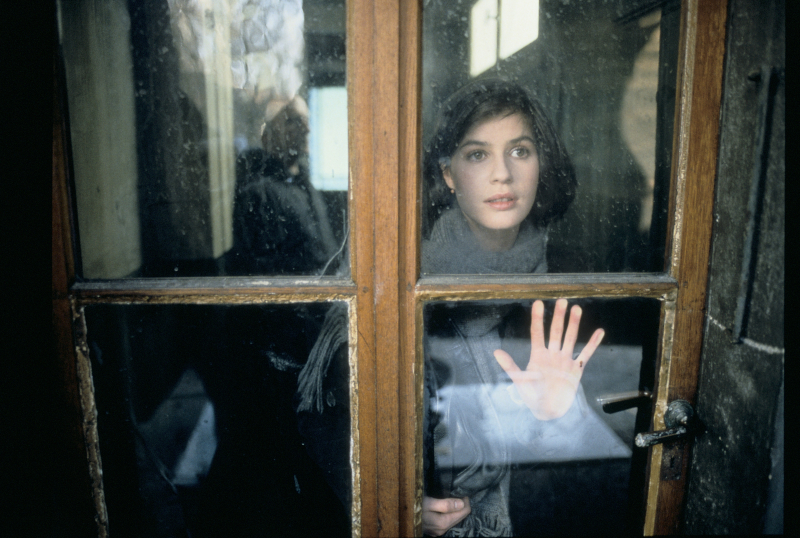
As mentioned, the film ends with a scene that brings most of the characters from the trilogy together, an optimistic contrivance not unlike the darker one which brings together the three narratives comprising Blind Chance (Krzysztof Kieślowski, 1987).
This is at once the most satisfying film of the current trilogy and a fitting end to a distinguished filmmaking career. Kieślowski declared it his final film at the time, and unlike numerous directors who say this and then later make a further film or films, he stuck to his guns. (Sadly, he died in 1996, aged 55.) Watching the film again, it’s clear that he is at the top of his game here.
The three main characters are deftly drawn in a compelling study of what makes each of them tick. There are parallels between the retired judge and the young law student, notably a story about a law book falling open before an exam to reveal the exam question; in both cases the student passes their subsequent exam with flying colours.
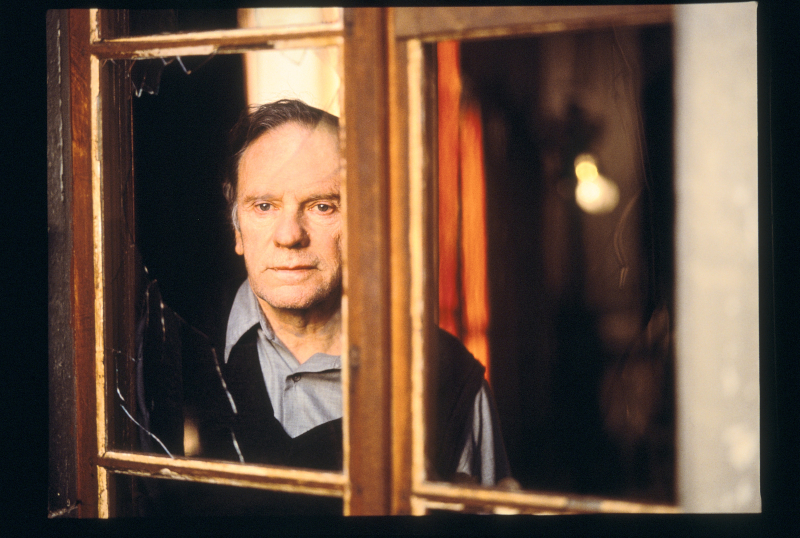
The mostly restrained mise-en-scène is punctuated by one explicit sex scene when Auguste, navigating a perilous window ledge to spy on his girlfriend, sees her engaging in full-blown coitus with another man and realises she’s no longer interested in him.
The rest of the film is gentler than that, however, with this the only entry in the Three Colours trilogy where the main character comes to the aid of an old woman struggling to insert a bottle into a bottle bank. (The old woman attempting to do this is a recurring motif in the three films.)
Although the film is a complete entity within itself, it benefits greatly from being viewed after the other two films, as the viewer inevitably makes comparisons between the three characters and their stories. (And if you don’t see this one last, the final scene won’t mean anything either.) So it’s worth seeing them in order. That said, this is arguably the strongest of the three, marking a high point in the careers of all those involved, particularly the director.
Three Colours: Red is out in cinemas in the UK as a 4K restoration on Friday, April 14th.
Trailer (Criterion):
Trailer (Three Colours trilogy in 4K) Curzon (1m):
Trailer (Three Colours trilogy in 4K) Janus films (2m):
